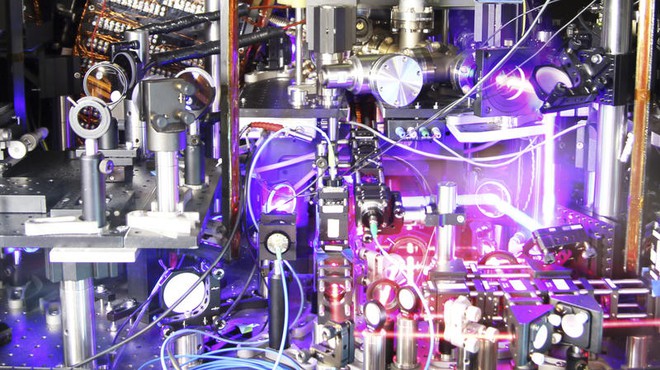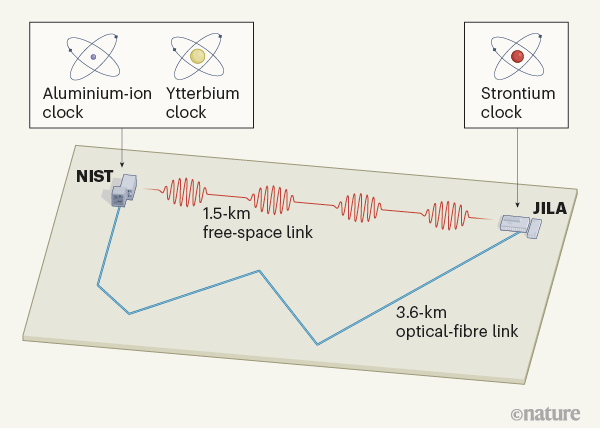The length of a second is about to be redefined
- Tram Ho
A second you once knew may not be a second, as scientists have gone one step further in redefining the length of a second.
To do so, they need atomic clocks. Looking like a jumble of strings and lasers, these devices work by touching the natural vibrations of the atoms, with each atom “touching” at a different rate.

Modern electronic devices, including smartphones, the internet or GPS, work through every hair of these atomic clocks.
” Every time you want to find your position on this planet, you are asking for the time from an atomic clock in a satellite from our GPS system .” Colin Kenedy, physicist at BACON (Boulder Atomic Clock Optical Network) said.
The world’s standard optical clocks dating back many decades are based on cesium atoms – which oscillate back and forth 9 billion times per second. But new atomic clocks based on other elements are even faster – that is, it allows for even smaller and more precise slices of clocks to be broken down every second.
Scientists are currently testing a new atomic clock with three different elements, including: aluminum, strontium and Ytterbium. The new optical clocks are 100 times more accurate than cesium clocks, when they can measure up to a trillion parts per second.

But it is even more important to compare them. Currently these three atomic clocks are located in three different positions, two at the US National Institute of Standards and Technology in Boulder, Colorado, another one 1.5 kilometers away at the JILA Research Institute. Comparing them over a long distance “ensures that the atomic clock Boulder will be similar to the clocks in Paris, London and Tokyo.”
This would be another step towards an atomic clock network that accurately measures the fundamental physical tests and characteristics of Earth’s gravity.
” The ultimate goal is to refine the seconds to a more stringent precision standard, something we can do with more precise and rigorous measurements .” Mr. Kenedy said.
According to the physicist, Jun Ye, who is also involved in the work, this means it is possible to create a clock that goes back billions of years to the beginning of the universe with only precision. in seconds. This network of atomic clocks will also be used as super-sensitive sensors to detect waves of dark matter as well as test Einstein’s Theory of Relativity.
Refer to NPR
Source : Genk
